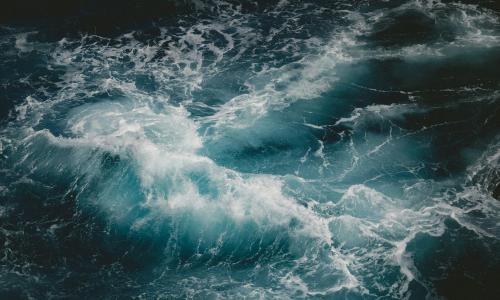Uncertainty is ubiquitous in our daily lives. We are uncertain about where to go to college, when and if to get married, who will play in the World Series, and so on.
To most of us, uncertainty means not knowing. To scientists, however, uncertainty is how well something is known. And, therein lies an important difference, especially when trying to understand what is known about climate change.
In science, there's often not absolute certainty. But, research reduces uncertainty. In many cases, theories have been tested and analyzed and examined so thoroughly that their chance of being wrong is infinitesimal. Other times, uncertainties linger despite lengthy research. In those cases, scientists make it their job to explain how well something is known. When gaps in knowledge exist, scientists qualify the evidence to ensure others don't form conclusions that go beyond what is known.
Even though it may seem counterintuitive, scientists like to point out the level of uncertainty. Why? Because they want to be as transparent as possible and it shows how well certain phenomena are understood.
Decision makers in our society use scientific input all the time. But they could make a critically wrong choice if the unknowns aren't taken into account. For instance, city planners could build a levee too low or not evacuate enough coastal communities along an expected landfall zone of a hurricane if uncertainty is understated. For these reasons, uncertainty plays a key role in informing public policy.
Taking into account the many sources of scientific understanding, climate scientists have sought to provide decision-makers with careful language regarding uncertainty. A "very likely" outcome, for example, is one that has a greater than 90 percent chance of occurring. Climate data or model projections in which we have "very high confidence" have at least a 9 out of 10 chance of being correct.
However, in this culture of transparency where climate scientists describe degrees of certainty and confidence in their findings, climate change deniers have linked less than complete certainty with not knowing anything. The truth is, scientists know a great deal about climate change. We have learned, for example, that the burning of fossil fuels and the clearing of forests release carbon dioxide (CO2) into the atmosphere. There is no uncertainty about this. We have learned that carbon dioxide and other greenhouse gases in the atmosphere trap heat through the greenhouse effect. Again, there is no uncertainty about this. Earth is warming because these gasses are being released faster than they can be absorbed by natural processes. It is very likely (greater than 90 percent probability) that human activities are the main reason for the world's temperature increase in the past 50 years.
Scientists know with very high confidence, or even greater certainty, that:
- Human-induced warming influences physical and biological systems throughout the world
- Sea levels are rising
- Glaciers and permafrost are shrinking
- Oceans are becoming more acidic
- Ranges of plants and animals are shifting
Scientists are uncertain, however, about how much global warming will occur in the future (between 2.1 degrees and 11 degrees Fahrenheit by 2100). They are also uncertain how soon the summer sea ice habitat where the ringed seal lives will disappear. Curiously, much of this uncertainty has to do with—are you ready?—humans. The choices we make in the next decade, or so, to reduce emissions of heat-trapping gasses could prevent catastrophic climate change.
So, what's the bottom line? Science has learned much about climate change. Science tells us what is more or less likely to be true. We know that acting now to deeply reduce heat-trapping emissions will limit the scope and severity of further impacts – and that is virtually certain.
Learn more about how scientists define certainty and uncertainty.
While it is important that scientists continue to evaluate and minimize uncertainties where possible, uncertainty can't be eliminated. Learn more about some of the details of climate change uncertainty that scientists continue to evaluate.




